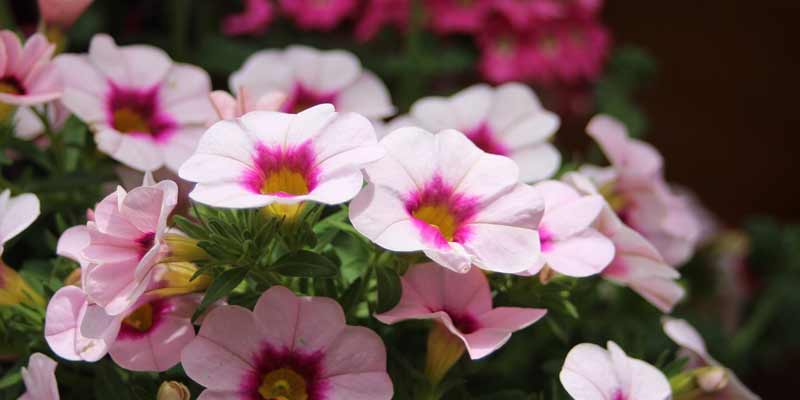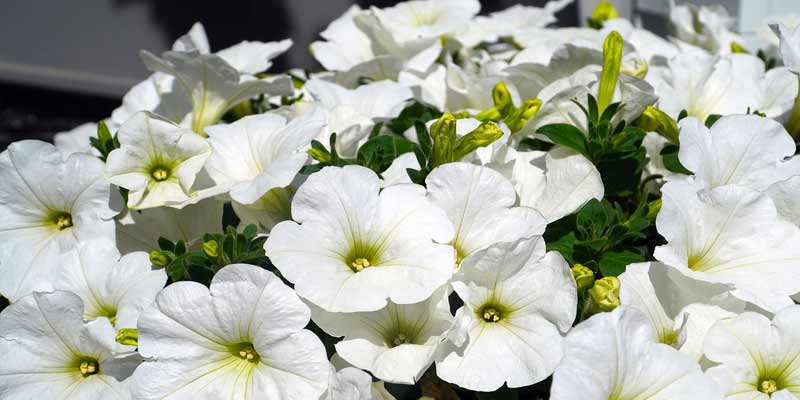With their kaleidoscope of colors and captivating fragrance, petunias rank among the most cherished flowering plants in gardens globally; moreover, they have an uncanny ability to thrive across a multitude of climates and soil conditions. This versatility makes them not just popular with gardeners at every level, it is indeed essential knowledge for all who seek successful cultivation.
However, understanding the intricacies–specifically–of petunia blooming seasons becomes paramount if one wishes to nurture these delightful flowers to their fullest potential.
This article unravels the mysteries behind petunias’ blooming cycle: we delve into the factors that influence their flowering, and strategize ways to prolong their vibrant displays.
The Blooming Cycle of Petunias
Scientifically termed Petunia x hys brida, petunias are warm-season annuals that earn renown for their prolific flowering habits; indeed, comprehending the blooming cycle of these plants hinges upon an acknowledgment: they favor not only warm temperatures but also copious sunlight.
From late spring through early fall, specifically during the warmer months when daylight hours extend further, petunias usually bloom; it is at this time that one can witness peak flowering.
4 Factors Influencing Blooming:
Several factors influence the blooming patterns of petunias, including:
1. Day Length
Photoperiodic plants, such as petunias thrive in prolonged daylight and abbreviated at night; their flowering is under the direct influence of day length. Notably, these flora species reach peak bloom during summer months—a period characterized by maximal daylight hours—with short nights enhancing this process further. Petunias may experience a decline in flowering activity as the fall season brings shorter daylight hours.
2. Temperature
For optimal growth and flowering, petunias favor warm temperatures that range from 60°F to 80°F (15°C to 27°C). However, if the thermometer drops below 50°F (10°C), their blossoming may decelerate significantly; moreover, bud development could face inhibition in cooler conditions.
Excessively hot temperatures above 90°F (32°C), on the other hand, may induce heat stress and diminish flower production.
3. Light Intensity
Adequate sunlight crucially stimulates flower bud formation and promotes robust flowering in petunias; thus, it is essential to ensure full sun exposure when planting them.
This practice guarantees that petunias receive the requisite light intensity for prolific blooming. Insufficient sunlight may result in sparse flowering and leggy growth.
4. Soil Moisture and Fertility
Consistent soil moisture and adequate fertility: these are the vital factors in sustaining petunia blooms throughout a growing season. To prevent stress-induced flower drop, it is crucial to ensure that the soil maintains an even level of moisture, avoiding waterlogging, however.
Regular fertilization with a balanced fertilizer promotes healthy growth and abundant flowering.
Understanding Different Types of Petunias
Various cultivars and types of petunias are available, each boasting unique flowering characteristics; understanding these differences–a task that can significantly aid gardeners in selecting suitable varieties for their landscapes–is crucial:
Grandiflora Petunias
Grandiflora Petunias, renowned for their large and showy flowers as well as vigorous growth habits, yield a variety of colors including solids, stripes, and colors in both single or double blooms. Grandiflora petunias are ideal for adding dramatic impact to flower beds and containers.
Multiflora Petunias
Multiflora Petunias, featuring smaller flowers than their grandiflora counterparts yet compensating with prolific blooming and superior weather tolerance, suit mass plantings; hanging baskets – as well as mixed containers. They offer continuous color throughout the season: this is a testament to their suitability.
Milliflora Petunias
The Milliflora Petunias, compact and miniature varieties, earn their value from an abundance of small dainty flowers. These petunias demonstrate exceptional branching and mounding habits that qualify them as ideal choices for edging, borders, or rock gardens. Milliflora petunias excel in containers and window boxes, adding charm to any setting.
Trailing Petunias
Petunias, whether trailing or spreading, exhibit cascading growth habits that suit them perfectly for hanging baskets, window boxes, and vertical gardens. Along their trailing stems they yield an abundance of blooms that form breathtaking cascades of color and texture.
Prolonging the Blooming Season
From late spring to early fall, petunias bloom naturally; however, gardeners can prolong their flowering and extend the beauty of their displays through various strategies:
Deadheading
Regular deadheading is the consistent removal of spent flowers as this practice is not just about aesthetics, but a strategic method to encourage continuous blooming. By redirecting the plant’s energy into producing new buds, we can stimulate additional flower production by simply pinching off faded blooms as soon as they wilt.
Pruning and Pinching
Periodic pruning and pinching maintain compact growth, encourage branching, and yield more flowering stems with denser foliage. To promote bushier, more floriferous plants: pinch back leggy growth; trim straggly stems.
Fertilization
Regularly applying a balanced, water-soluble fertilizer provides petunias with the essential nutrients for robust growth and flowering; thus, it is crucial. Ensure to adhere to package instructions during fertilization – however, be cautious of excessive nitrogen promotion as this may favor lush foliage over blossoms.
Watering Practices
Regularly water petunias to maintain consistent soil moisture, particularly during hot and dry weather periods. Ensure deep watering for an evenly moist root zone; however, be cautious of overwatering as it may result in issues like root rot and other problems related to excessive moisture.
Mulching
Around petunia plants a process that involves applying a layer of organic mulch, for instance, shredded bark or compost serves multiple purposes; it conserves soil moisture and suppresses weed growth while regulating soil temperatures.
Moreover, as the mulch decomposes, it enhances soil fertility as this promotes not only healthy root development but also bountiful flowering.
Conclusion
Petunias, with their exquisite flowers and vibrant hues, captivate gardeners during the blooming season as a testament to nature’s beauty and resilience. Offering endless possibilities for stunning floral displays in gardens, containers, or hanging baskets – from grandiflora to trailing varieties; petunias are indeed versatile.
Gardeners who understand the factors that influence their bloom time can select suitable varieties strategically while employing proper care techniques: this enables them not only to prolong the flowering season but also ensures enjoyment of these beautiful blooms from spring through fall. Petunias, when gardeners patiently nurture them, reward them with bountiful blooms and endless delight. They enrich outdoor spaces – timeless charm and elegance their unique offering.



Leave a Reply